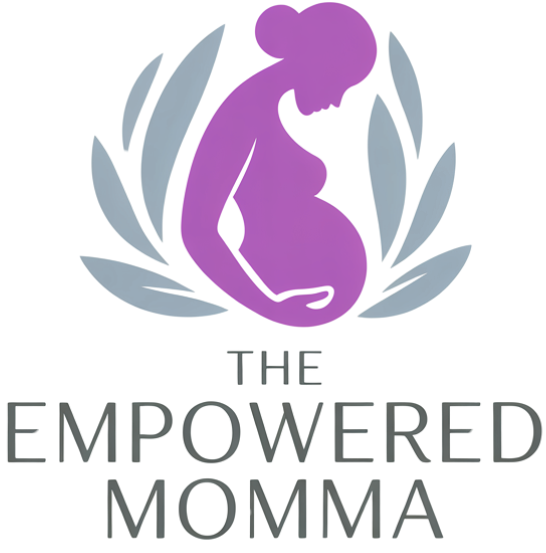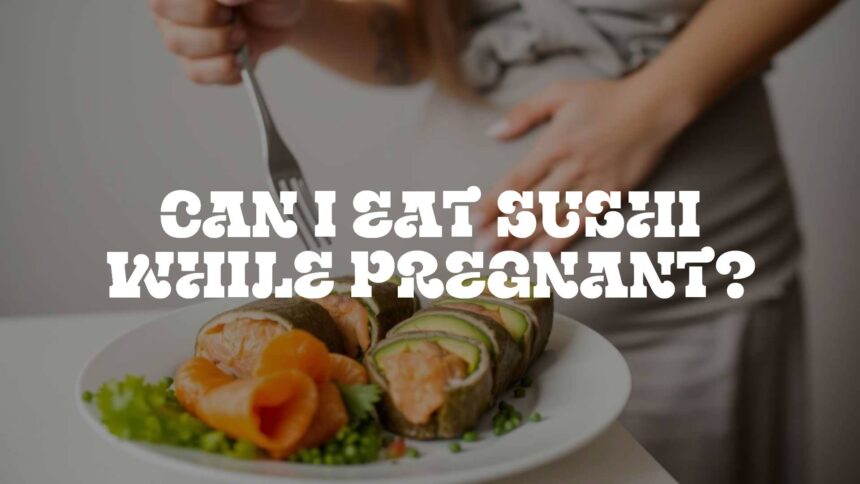The short answer is yes, you can eat sushi during pregnancy, but there are some important guidelines to follow. It isn’t a strict “no,” as many believe, but rather a “yes-if it’s cooked, made with low-mercury seafood, and ordered from a reliable place.” This means you need to avoid raw fish, especially high-mercury types, but there are still many safe and tasty sushi choices for pregnant women. Understanding the risks with raw fish and mercury can help you pick smarter options to keep both you and your baby healthy.

Can you eat sushi while pregnant?
Many pregnant people wonder about sushi when they’re expecting, especially since a lot of foods are off-limits during this time. Dr. Hector Chapa, an OB-GYN from Texas A&M College of Medicine, describes a patient who wanted to plan her pregnancy around her love for Philadelphia rolls. Fortunately, you don’t have to completely give up sushi if you’re pregnant.
Most experts agree that you can eat sushi if you stick to certain rules. Most important, the sushi needs to be cooked, from a trusted source, and use fish that has little mercury. This means classic raw sushi like tuna or salmon rolls are best avoided. Instead, pay attention to the type and amount of sushi you eat to keep yourself and your baby safe.
Points to think about before eating sushi during pregnancy
- Your immune system is weaker during pregnancy, so you’re at higher risk for food poisoning.
- Seafood should always be cooked to at least 145°F to kill germs and parasites.
- Even with cooked sushi, some fish may have a lot of mercury, which can be bad for your baby’s brain and nervous system.
Common myths about sushi and pregnancy
- Myth: All sushi is unsafe during pregnancy. Actually, many sushi rolls are made with cooked seafood, vegetables, or eggs, and are fine to eat.
- Myth: Freezing raw fish makes it completely safe. Freezing can kill some parasites but not all bacteria, so raw fish is still risky for pregnant people.
- Myth: Eating just a little raw fish won’t matter. Even a small amount can be enough to cause problems if it contains dangerous bacteria or too much mercury.
What are the risks of eating sushi when pregnant?
Understanding the main risks of sushi during pregnancy is important. Most problems happen with raw or undercooked fish and certain fish types that may contain dangerous amounts of bacteria, parasites, or mercury. Your immune system is weaker, making it easier to get sick from these sources.
Risk of food poisoning from raw sushi
The big danger with raw sushi is food poisoning. Raw fish can carry bacteria and parasites that cause sickness. These illnesses can be much more serious during pregnancy. If you get sick, it can lead to stomach pain, vomiting, and even serious issues for you and your baby. This is why groups like the American College of Obstetricians and Gynecologists say not to eat raw seafood while pregnant.

Bacteria and parasites in raw fish
Raw fish sometimes has bacteria like Listeria or parasites like Toxoplasma. Listeriosis (an illness caused by Listeria) can lead to miscarriage, early birth, or stillbirth. Pregnant women are about ten times more likely to get it than others. Even though freezing helps with some parasites, cooking is the only sure way to kill all the bad germs.
Mercury risk in sushi
Some sushi fish have a lot of mercury. Mercury is a heavy metal that can damage your baby’s nervous system. Fish with the most mercury tend to be big, long-living types. It’s best to know which fish have high mercury levels and stay away from them.

Cross-contamination at sushi bars
Even cooked sushi can pick up germs from raw fish through shared surfaces or utensils. This cross-contamination can be risky. Choose restaurants that follow good cleaning habits and aren’t afraid to answer your questions about food prep. If you’re unsure, pick something else or stick with cooked options.
Can you eat raw sushi while pregnant?
Doctors and health groups clearly say not to eat raw or partly cooked fish during pregnancy. The possible dangers of getting sick from bacteria and parasites are just too high for pregnant people.
Why doctors say “no” to raw fish in pregnancy
Raw fish raises the risk of food poisoning because your immune system doesn’t fight germs as well when you’re pregnant. Germs like Listeria or parasites from raw fish can cause serious problems for your baby, including miscarriage or premature birth. Cooking fish to 145°F is the only way to make it truly safe.
Which raw sushi types are most dangerous?
Basically, all raw fish sushi-like tuna, salmon, yellowtail, mackerel, and sashimi-should be avoided. Even fish that look cooked outside but are raw inside (“seared” style) aren’t safe. The bigger risk comes from types like bigeye tuna and swordfish that also have higher mercury levels.
What if you accidentally ate raw sushi while pregnant?
If you’ve eaten raw sushi by mistake, stay calm-the risk from just one time is low. Tell your doctor so they can give you advice. Watch for flu-like symptoms (fever, vomiting, nausea, aches) and get help right away if you feel sick. Your healthcare provider will know what to do next.
Is cooked sushi safe in pregnancy?
Yes! Cooked sushi is usually safe if it’s made with low-mercury fish and fully cooked ingredients. This means you can still enjoy many sushi flavors, as long as you pick the right kinds.
Cooked sushi types for pregnant women
- Shrimp (ebi): Always cooked in sushi and safe.
- Imitation crab (kani): Cooked fish, safe and found in California rolls.
- Cooked eel (unagi): Traditional and safe when fully cooked.
- Cooked salmon: Just make sure it’s fully opaque inside.
- Tempura rolls: Fried shrimp, veggies, or other cooked fillings are safe options.
- Vegetarian and vegan rolls: Avocado, cucumber, sweet potato, or tofu are great for variety.
- Tamago/egg rolls: A protein-rich and safe option.

How to know if sushi is cooked safely
- Cook all fish to 145°F (use a food thermometer or make sure it’s flaky and opaque).
- At restaurants, ask how the fish is cooked and check for cross-contamination risks.
- Choose places with good cleaning and food handling habits.
Vegetarian and vegan sushi while pregnant
- Sushi with cooked eggs, tofu, and tempeh is safe and full of protein.
- Common veggies used in sushi-such as avocado, cucumber, carrots, asparagus, pickles, and sweet potato-are very healthy for you and your baby.
Can you eat shrimp, seaweed, or other sushi ingredients while pregnant?
Many sushi ingredients besides fish are completely fine during pregnancy, and can even be good for you.
Is shrimp safe in sushi during pregnancy?
Yes, as long as it’s cooked. Shrimp is low in mercury and a good source of iron. The same rule applies to cooked crab, lobster, scallops, and oysters. Make sure they’re fully cooked-raw versions are not recommended.
Can you eat seaweed during pregnancy?
Yes, seaweed (nori) is a good source of iodine and other nutrients, which help with thyroid function and your baby’s brain growth. However, seaweed can be high in salt, so try not to overdo salty seaweed snacks.
Other sushi ingredients: eggs, tofu, and vegetables
- Cooked eggs (tamago): A safe, protein-heavy choice.
- Tofu and tempeh: Good plant-based proteins.
- Vegetables: Avocado, cucumber, sweet potato, and carrots are not only safe but great for your health, too. Avocado, for example, is full of folate for your baby’s growth.
Mercury levels and types of sushi fish
Pay attention to how much mercury is in the fish you eat. Some types have a lot and can be harmful for your baby, while others are low and safer to eat in moderation.
High-mercury fish to avoid in sushi
| Fish | Notes |
|---|---|
| Ahi (yellowfin tuna) | Common in raw tuna rolls; high mercury |
| Bigeye, bluefin, yellowfin tuna (maguro) | High mercury |
| Albacore tuna (shiro) | Limit to 6 oz/wk due to mercury |
| Horse mackerel (aji), mackerel (saba) | High mercury |
| Swordfish, king mackerel, tilefish | Highest mercury-avoid completely |
| Buri (adult yellowtail), hamachi (young yellowtail) | Avoid due to mercury |
Lower-mercury seafood options
- Salmon (sake): Cooked, wild-caught is best.
- Shrimp (ebi): Very low mercury.
- Crab (kani): Both real and imitation are cooked and safe.
- Freshwater eel (unagi): Always cooked, low in mercury.
- Octopus (tako), squid (ika), scallop (hotategai): Safe when cooked.
- Fish eggs (ikura, masago, tobikko): Low mercury, safe if from a good source.
- Clams and other shellfish (when cooked): Low in mercury and safe.
How much sushi is safe to eat while pregnant?
Stick to 8-12 ounces (about 2-3 servings) of low-mercury, cooked fish per week. Space your consumption out across the week instead of eating it all at once. Always pick cooked options, not raw, and keep food safety in mind.
How to choose and prepare safe sushi while pregnant
To enjoy sushi safely while pregnant, whether eating out or at home, use the following tips:
Eating sushi at restaurants
- Pick places known for being clean and using fresh food.
- Busy restaurants often have fresher ingredients.
- Ask if they use different knives and cutting boards for raw/cooked food.
- Order cooked rolls (California, shrimp tempura, eel, or veggie rolls).
- Skip dishes labeled “raw,” “sashimi,” or “seared.”
- Be careful with soy sauce-regular soy sauce has a lot of salt, so try low-sodium or just use a little.
Making sushi at home
- Use only cooked, low-mercury seafood.
- Cook fish to 145°F (opaque, flakes with a fork).
- Wash hands and keep cutting boards, knives, and surfaces clean.
- Store fish and other perishables in the fridge until you’re ready to use them.
Questions to discuss with your doctor
- Which fish types are safest for me?
- How much seafood should I eat?
- What should I do if I eat something risky?
- Are there local warnings about fish safety?
Food safety tips for pregnant women
Good food handling and cooking habits help prevent illness. This is always important, but especially so when you’re pregnant.
How to avoid food poisoning from sushi and other foods
- Wash hands before and after handling food.
- Keep kitchens, boards, and utensils clean.
- Don’t let raw meat, fish, or eggs touch ready-to-eat foods.
- Cook all animal foods to safe temperatures:
- Seafood: 145°F
- Poultry: 165°F
- Ground meats: 160°F
- Chill foods quickly-refrigerate within two hours of cooking.
- Avoid buffets and places where food sits out for a long time.
- Skip unpasteurized dairy, soft cheeses unless pasteurized, deli meats unless heated, and raw sprouts.
Quick recap: How to enjoy sushi safely during pregnancy
- Choose cooked rolls with low-mercury fish or vegetarian ingredients.
- Make sure all seafood is cooked to 145°F.
- Eat no more than 8-12 ounces per week of low-mercury seafood.
- Stay away from fish with high mercury like swordfish, king mackerel, and some tuna.
- Eat at clean, reputable restaurants-and don’t be shy about asking how they prepare the food.
- If unsure, choose vegetarian or vegan rolls for peace of mind.
- Talk to your healthcare provider about any concerns or questions you have about your diet.

By following these simple steps, you can keep having sushi as part of your pregnancy diet and help keep both you and your baby healthy and happy.

